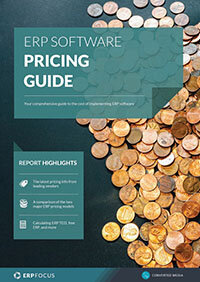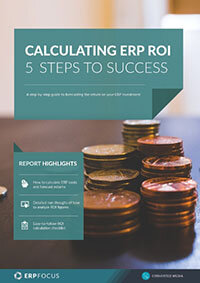What to do when you realize your ERP costs too much
In enterprise-world, it is generally accepted that any ERP platform can lead to sudden and potentially unsustainable costs over time. It’s not necessarily purchase, or cost-of-ownership issues that tend to trigger increases in red ink, but affiliated, indirect, or unknown inefficiencies ‘inside’ the operational chain itself that usually gets you.
Consequently, if you suddenly look up, and find that your ERP budget is upside down, here are some ways to marginalize the negative impacts.
Identify and accept ERP cost weaknesses
Spiraling ERP costs are like a cancerous tumor, since once the thing starts growing, it’s very difficult to excise entirely unless you commit to an aggressive and persistent course of treatment. In an ERP event, then, this means that the enterprise must ‘dig down deep’, and clearly identify any/all unnecessary costs, accept audit results in due course, then respond quickly with plans and actions that allow an ability to marginalize, or completely mitigate any untoward constraints.
Optimize what you have
In concert with the ‘Identify, accept, and plan’ suggestion; at the outset of this effort, and before you begin throwing baby and bathwater out the window simultaneously, it is best to simply optimize what you have in hand first. For example, ERP is largely rules-based, and those data points usually cascade from module to module.
Use this comprehensive pricing guide to work out how much a new ERP will cost you
So, if you are losing cost efficiency between the production, distribution, and point-of-sale stages, chances are that some of this loss isn’t on the systems side at all, but instead is being created by malformed business rules upstream. In axiomatic terms; ‘if you don’t like your results; check your assumptions’. Take a beat and consider ‘why’ you’re doing things, before you begin tearing a potentially acceptable systems infrastructure apart.
Move your ERP to the cloud
Many established platforms still reside on-premise, and over time necessary operational ERP costs tend to rise due to recurrent maintenance and support requirements. Consequently, is you find yourself in a hole, perhaps the most efficient approach is to simply migrate your operations to the cloud.
Today’s virtual systems tend to harbor intrinsic cost reductions since most necessary ingredients are already in the pudding. Most importantly, however, an ability to ‘allow’ someone else to worry about low-level and costly drudgery like security monitoring, script normalization, database stability, and performance auditing can literally save thousands on the bottom-line.
Apply comprehensive e-commerce principles
Finally, and perhaps the most useful suggestion, is to take your ERP operations to the next level by creating an integrated end-to-end e-commerce system. Not only will the effort pay dividends in terms of identifying and clarifying what is, or isn’t going on throughout your business chain, but also force-streamline your transaction handling, while extending and penetrating new markets by directly leveraging various IoT precepts.
At the end of the day, every enterprise is different. You’ll never really know where your lost money is going until you spend the time necessary to look find, fix and kill the business seepage.
Free white paper

ERP Software Pricing Guide
Get the latest pricing information on over 80 popular ERP systems, and learn how to budget for your ERP project in our free guide

Featured white papers
-

Calculating ERP ROI: 5 steps to success
Calculate your new ERP's financial benefits with this comprehensive guide
Download
Related articles
-

Nine signs you need an eCommerce ERP integration
A guest blog from Brightpearl discussing eCommerce ERP and integration
-

CMMC Compliance: What Aerospace and Defense Manufacturers Need to Know
Key insights on CMMC compliance, deadlines, and securing DoD contracts with CMMC 2.0 certificatio...
-

Top 10 ERP selection criteria (including checklist)
The most important ERP selection criteria you should keep in mind during your selection process.

